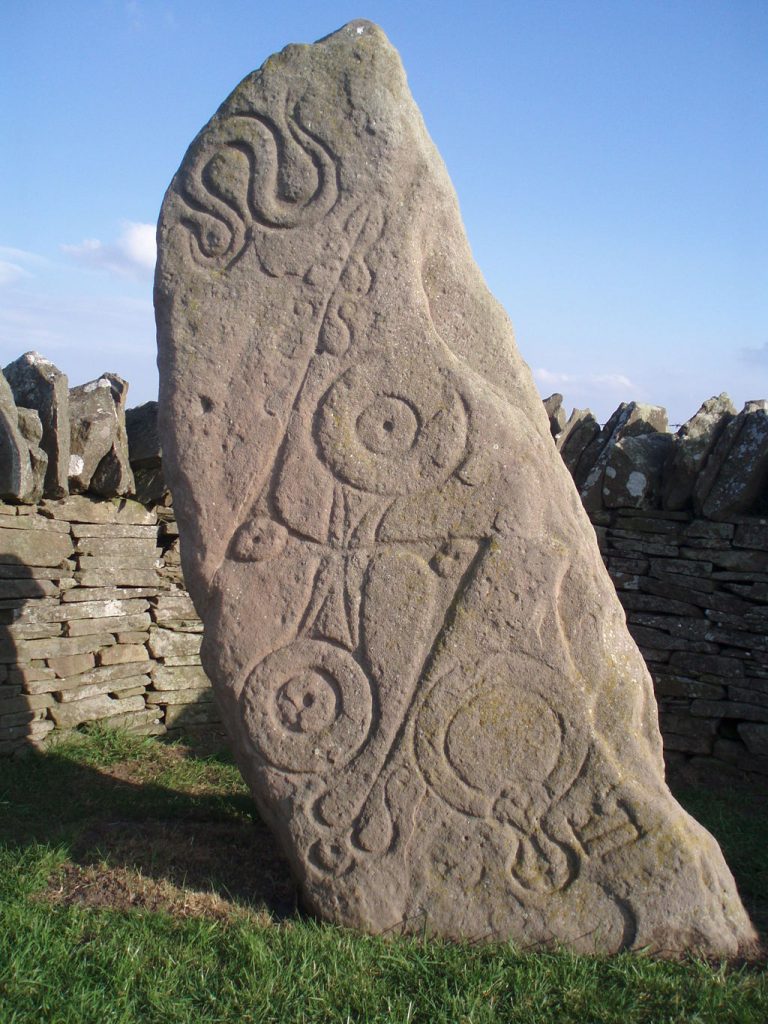Nessie, or, the Loch Ness Monster is arguably the world’s most popular cryptid. A cryptid is a mythologized animal that mainstream science does not believe to exist. However, despite there being no concrete proof of Nessie’s existence, legends of the creature have stirred for over 1500 years. Currently, tourism to Lake Loch Ness—where legend says that Nessie dwells—brings in about $54 million USD to Scotland every year. But how did the myth begin? And what keeps us fascinated?
The Origins of Nessie, the Loch Ness Monster

Source: Wikipedia
Lake Loch Ness, located in the Scottish highlands, is the largest freshwater lake in all of Great Britain. It spans 23 miles and has a depth of about 800 feet. But is it massive enough to truly hide a monster?
The earliest accounts of Nessie date back to around 500 CE. Local Picts, a group of Celtic-speaking people, carved an image of a massive aquatic creature into standing stones near the lake.
In the 7th century, the first written account of the creature surfaced. A biography of St. Columba—the Irish missionary who brought Christianity to Scotland—claims that while on his way to visit the king of the Picts, the saint made a stop at Lake Loch Ness to challenge a beast that had allegedly been killing people in the lake.
The legend goes on to say that St. Columba happened upon the beast just as it was about to kill a man. He, St. Columba, called upon God for the creature to “go back with all speed.”
Modern Loch Ness Monster Sightings Begin
Source: Wikipedia
The legend remained stagnant for centuries, with the first well-known modern sighting not being publicized until May 2, 1933. A local newspaper, the Inverness Courier, reported that a local couple had seen “an enormous animal rolling and plunging around the surface.”
Suddenly, public obsession with Nessie exploded. London’s Daily Mail hired big game hunter Marmaduke Wetherell to capture the creature. After days of searching the lake, Wetherell claimed to have found the unidentifiable footprints of a large animal. This alone prompted the Daily Mail to print the headline “Monster of Loch Ness Is Not a Legend but a Fact.”
Tourists were now flooding to the lake, hoping to catch a glimpse of the beast. However, their enthusiasm was short-lived. Plaster casts of the footprints found by Wetherell were sent to the British
Natural History Museum for analysis.
NHM researchers revealed that these footprints likely came from the stuffed foot of a hippopotamus. Having caught Wetherell in a lie, both the Daily Mail and the general public humiliated him. However, this will not be the last we’ve seen of him.
The Surgeon’s Photograph
In 1934, a man named Colonel Wilson submitted to news outlets a seemingly convincing photo of Nessie. This became known as “the surgeon’s photograph,” as Wilson was a surgeon and did not want his real name attached to the photo.
The photo depicted the silhouette of a dinosaur-like head emerging from the lake. For whatever reason, people jumped to the conclusion that Nessie was the sole survivor of the dinosaur species plesiosaurus, which paleontologists say went extinct 65 million years ago. How could this be? Well, believers claimed that since the lake was frozen solid during the ice age, a plesiosaurus could have been preserved by the ice. However, considering that the plesiosaur was a cold-blooded creature, it wouldn’t have been able to survive in such conditions.
Other theories were even more ridiculous. For example, some insisted that in the early 1900s, famed occultise Aleister Crowley created Nessie. Apparently, Crowley had summoned the Loch Ness monster while trying to conjure evil spirits in his home. Thankfully, this is one of the less popular theories surrounding the cryptid.
1994: The Surgeons Photograph Is a Hoax
Source: Wikipedia
For 60 years, proponents of the Loch Ness Monster pointed to the surgeon’s photograph as irrefutable proof of the creature’s existence. However, a 1994 deathbed confession soon shattered the validity of the photograph.
In 1994, a man named Maurice Chambers passed away. Some of the personal papers found after his death revealed that he and a group of co-conspirators had created the photograph. Colonel Wilson was merely the group’s face, as it was believed that his position as a physician would lend validity to the photo.
According to the confession, the picture was taken by none other than Marmaduke Wetherell. Wetherell wished to save his reputation after news of his lies reached the general public. Chris Spurling, Wetherell’s son-in-law, corroborated this confession. Spurling used a toy submarine with a sculpted wooden dinosaur head attached to create the “creature” seen in the picture.
The Loch Ness Monster: Official Verdict
New Nessie sighting as wake is spotted moving against current for seven minutes
— Anwar Knight (@AnwarKnight) September 2, 2022
"this is the first official sighting since April. The incident, occured on August 27, at the northern tip of the loch"
Do you believe in the #LochNessMonster ?
https://t.co/fyUspSfSNa
There has been no solid proof of the existence of the Loch Ness Monster. However, people continue to preserve the possibility of its being real, as sometimes believing is better than not believing. If nothing else, Nessie is a testament to the human need to believe in something greater than the everyday.